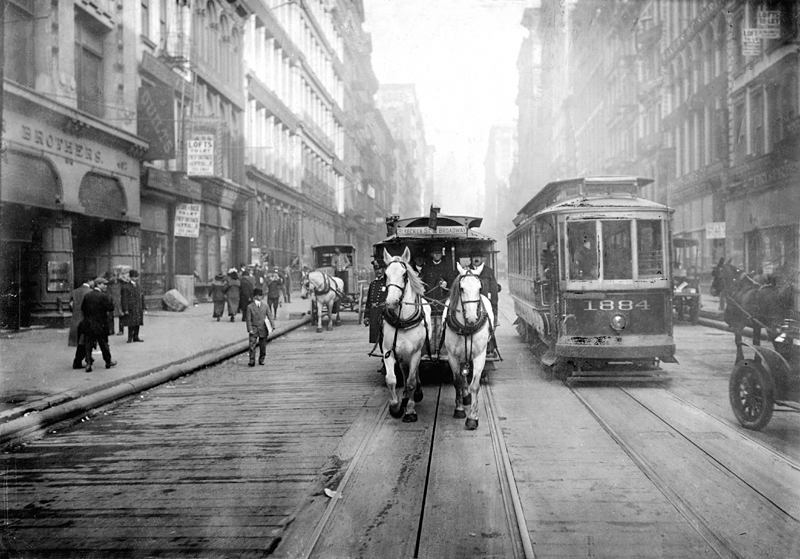From Grandon Keim’s contrarian Nautilus article which revisits and revises the American transition from horses to automobiles:
“History loves smooth transitions, such as horses to cars. ‘There’s an assumption that you have this clean break between eras,’ says urban historian Martin Melosi. ‘In the real world, that doesn’t happen.’ The idea of a neat transition from horses to the automobile age is a history-as-approved-by-victors myth that elides several decades when horse travel declined but automobiles were uncommon, used primarily to haul freight. The automobile as we now conceive it, a personal transport machine, wouldn’t come along for nearly half a century.
The late 19th and early 20th centuries was actually the age of streetcars. Running on steel rails, a few pulled by horses but most powered by electricity, they were the dominant urban mode of vehicular transport. The first suburbs date to this time, rising along streetcar lines in Boston, Los Angeles, Pittsburgh, and other cities. The ‘streetcar suburbs’ featured single-family houses branching off store-lined main streets, the very model of walkable, humane villages now celebrated by urban planners and citizens. Only a handful of wealthy drivers actually thought of cars as personal transportation, and that mostly involved weekend countryside jaunts.
To the average city dweller, the idea of a city oriented around transportation in cars, and especially privately owned cars carrying one or a few people, would have been incomprehensible. Indeed, the modern idea of a street as an artery, existing primarily to convey vehicles, would have been foreign, says Christopher W. Wells, author of Car Country: An Environmental History. Streets were more like parks, used by streetcars, horses, cars, and pedestrians, but also as playgrounds and gathering places.
In this environment, motor vehicles were seen as dangerous intruders, a threat to public safety and especially the safety of children. Blame for accidents was laid entirely on drivers. In 1923, Cincinnati residents even required that cars operating in the city be modified so they couldn’t go faster than 25 miles per hour. ‘Today we learn that streets are for cars. That’s 100 percent opposed to the dominant view a century ago,’ says Peter Norton, who wrote Fighting Traffic: The Dawn of the Motor Age in the American City. ‘It’s a different mental model of what a street is for.'”

